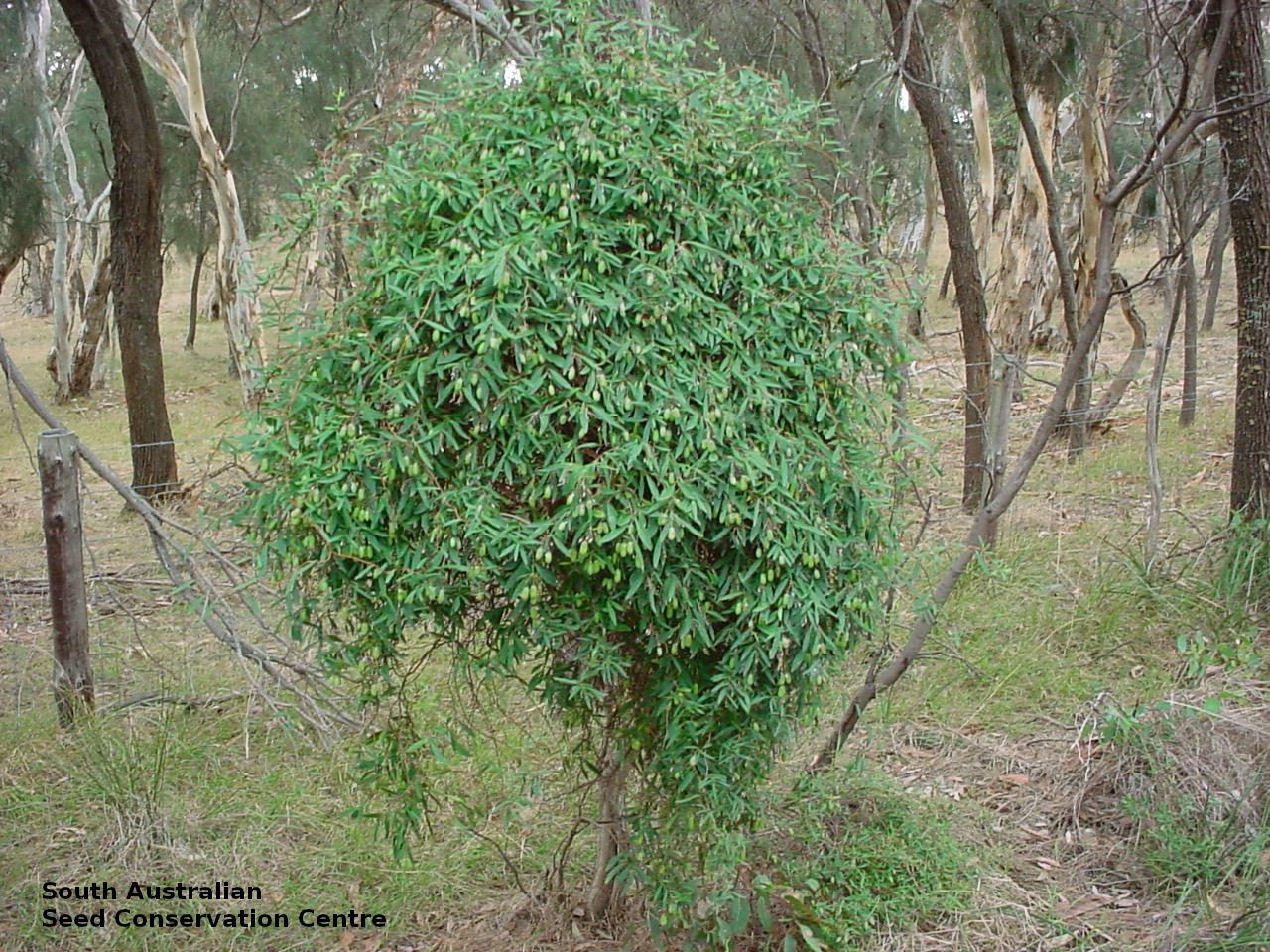

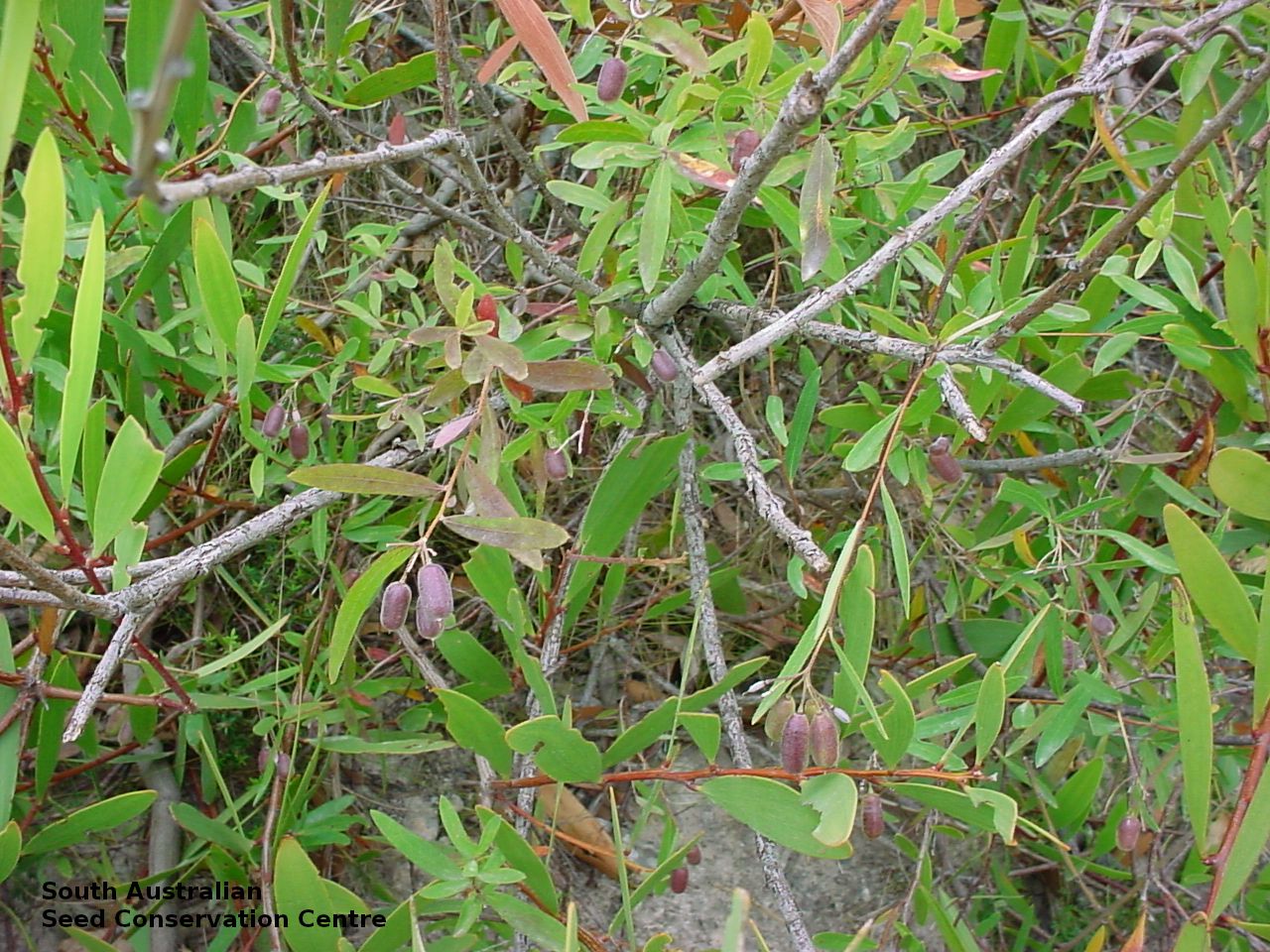
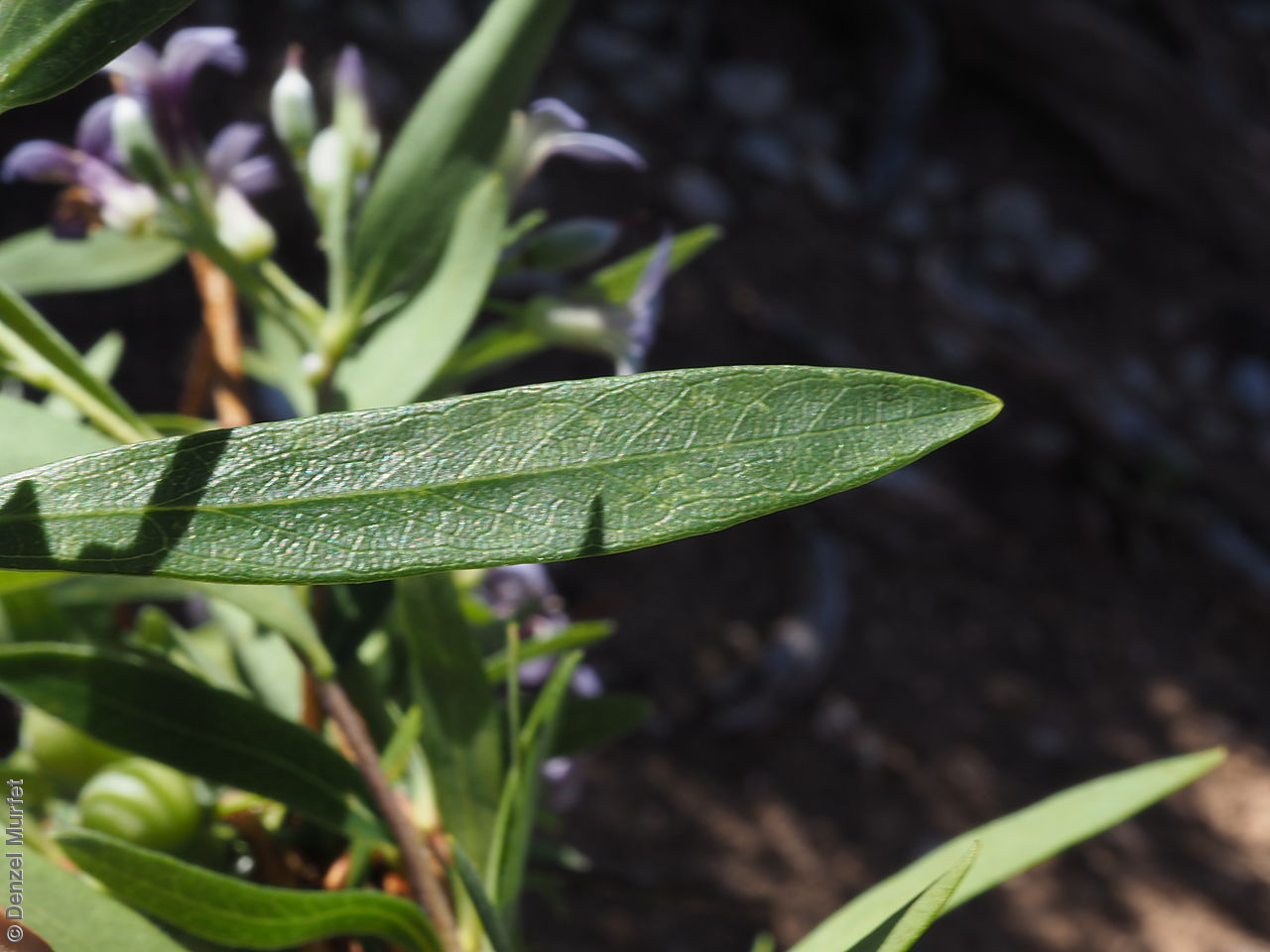
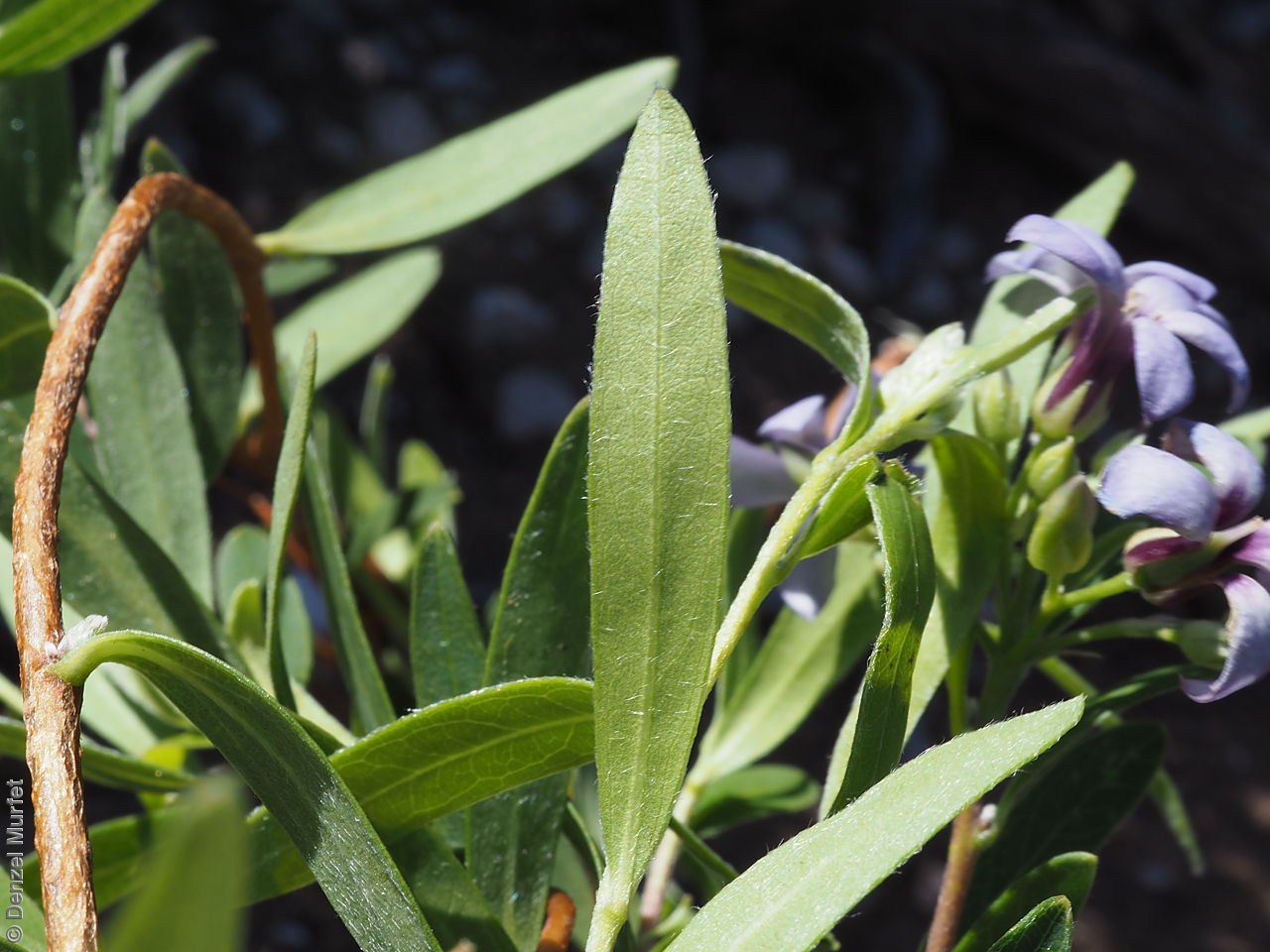
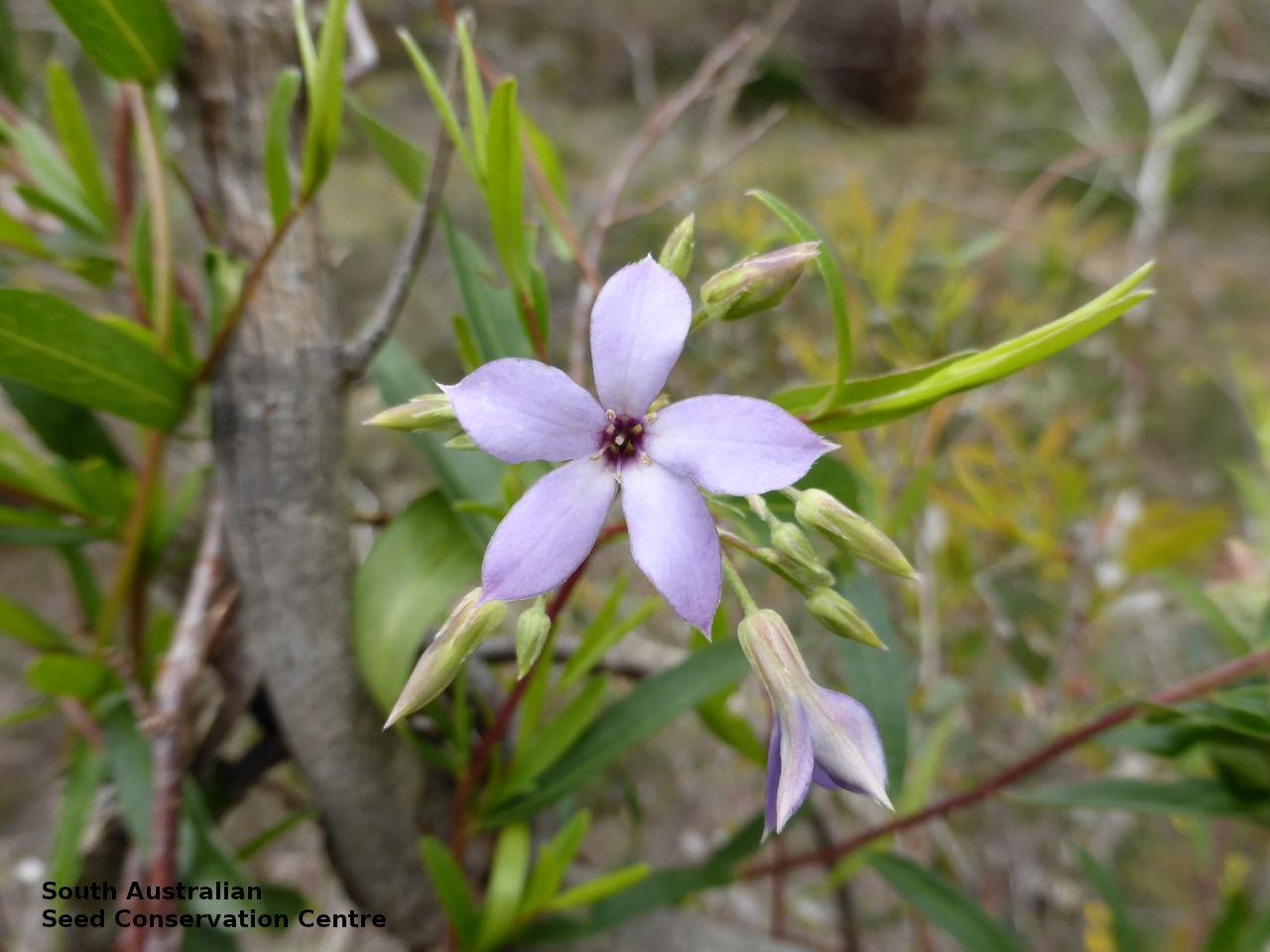
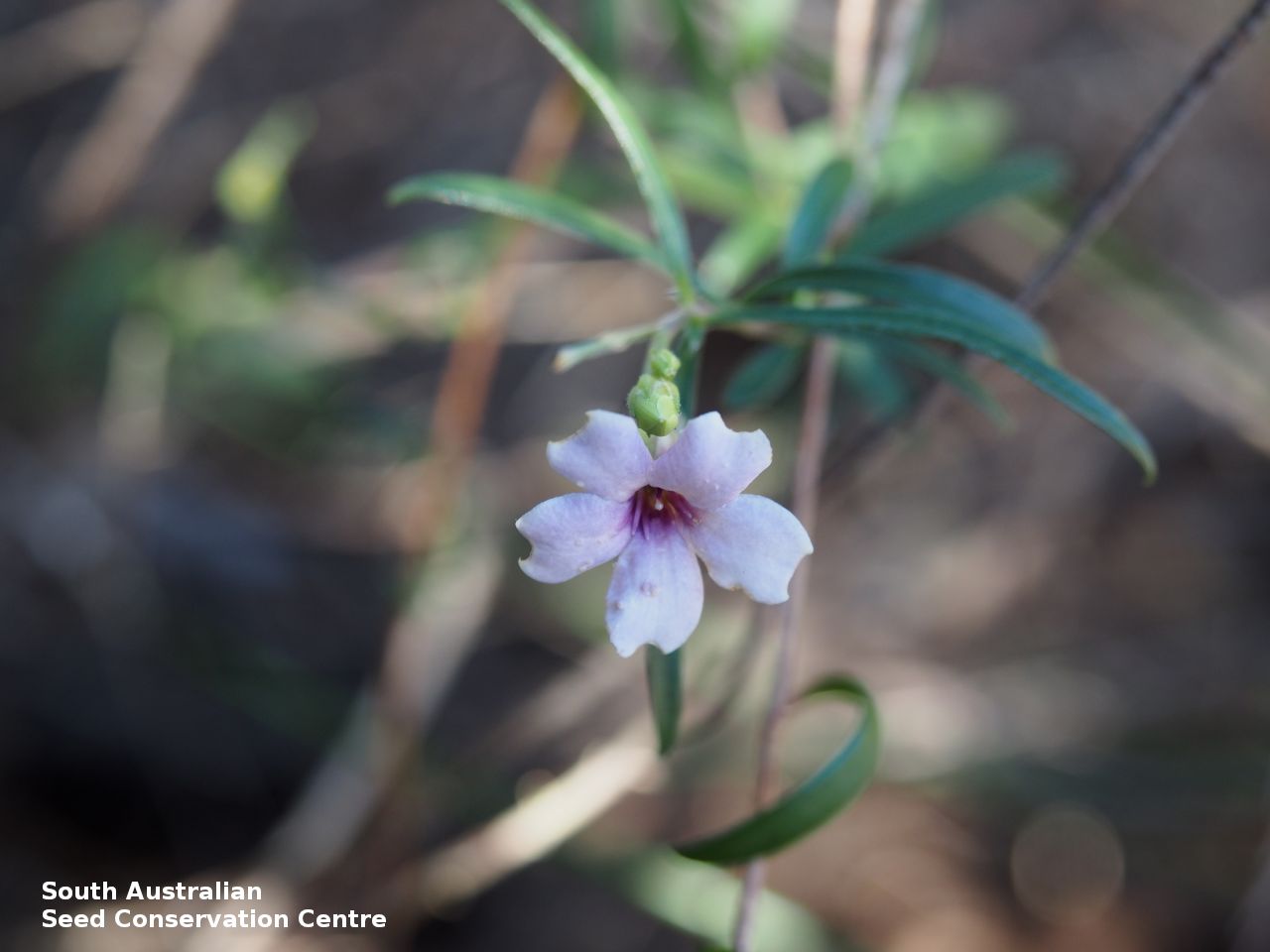

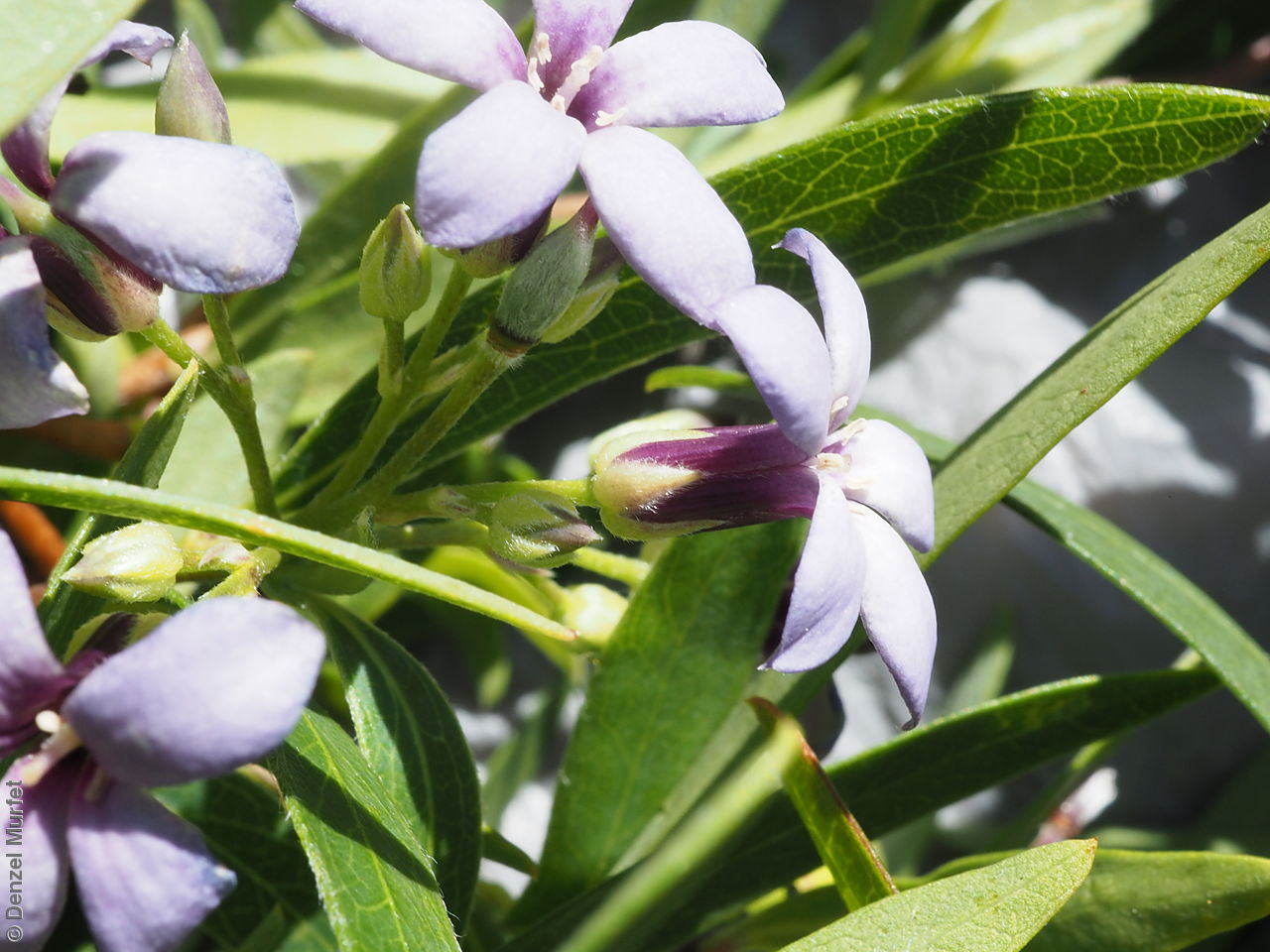

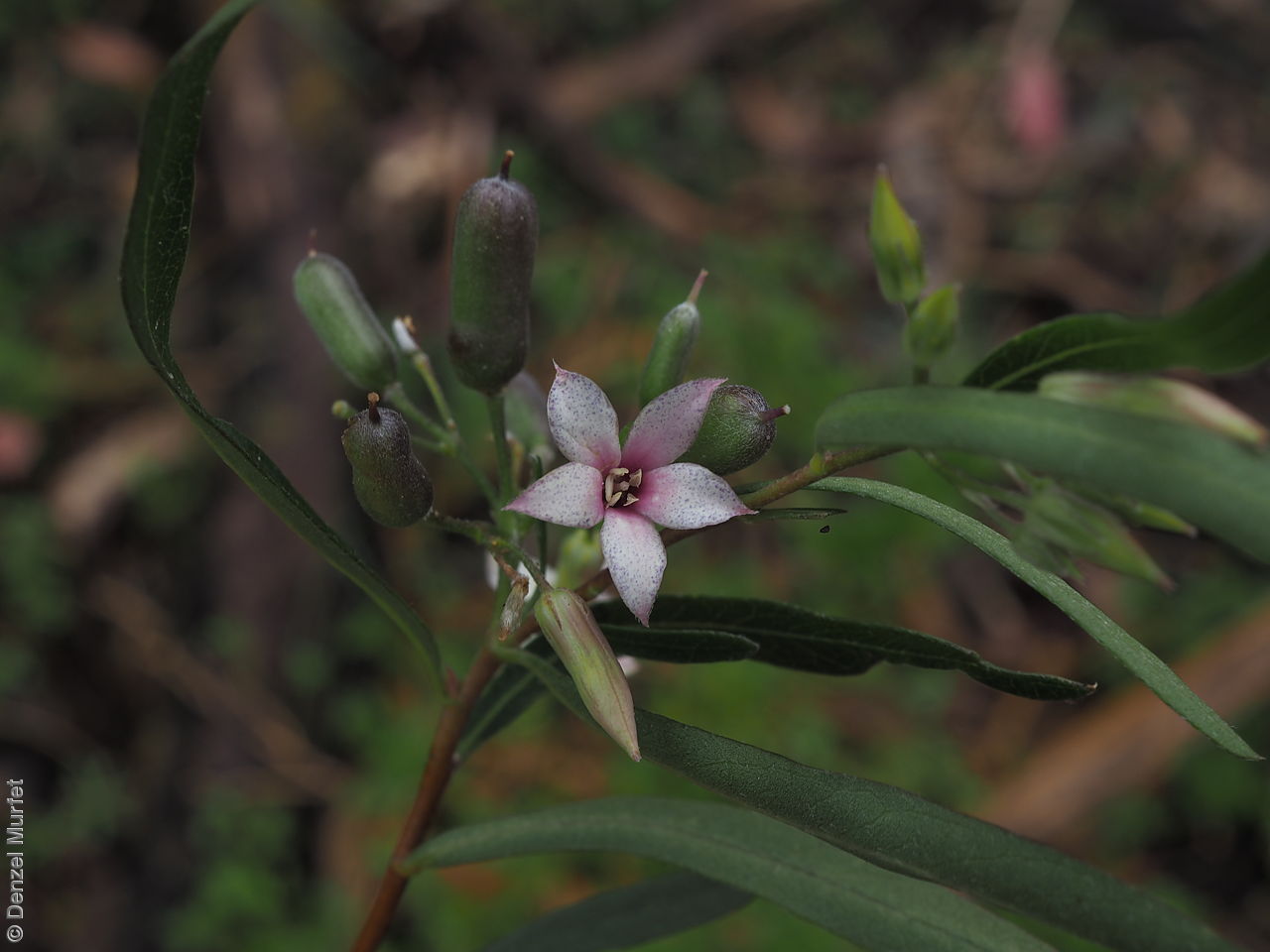
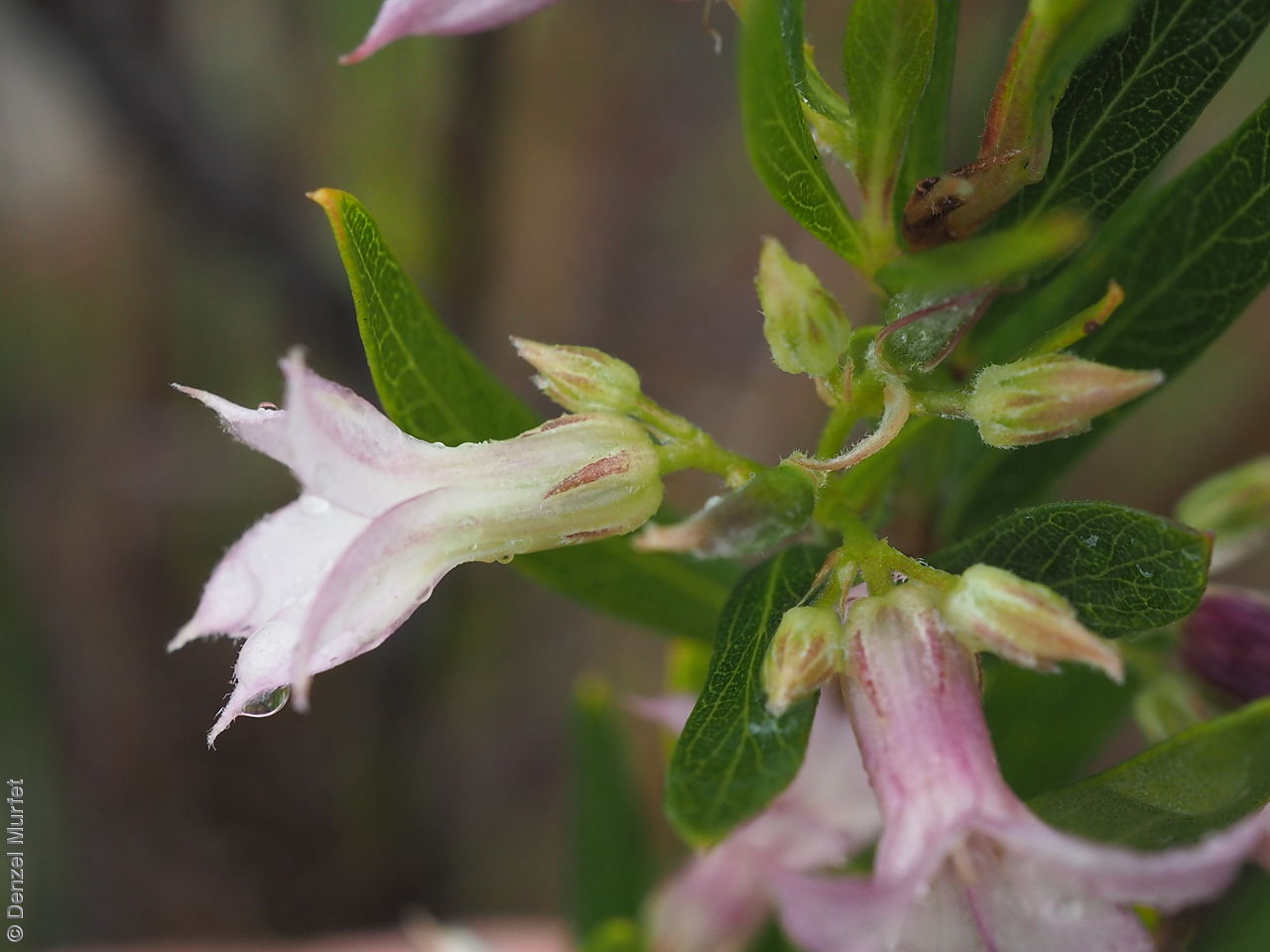
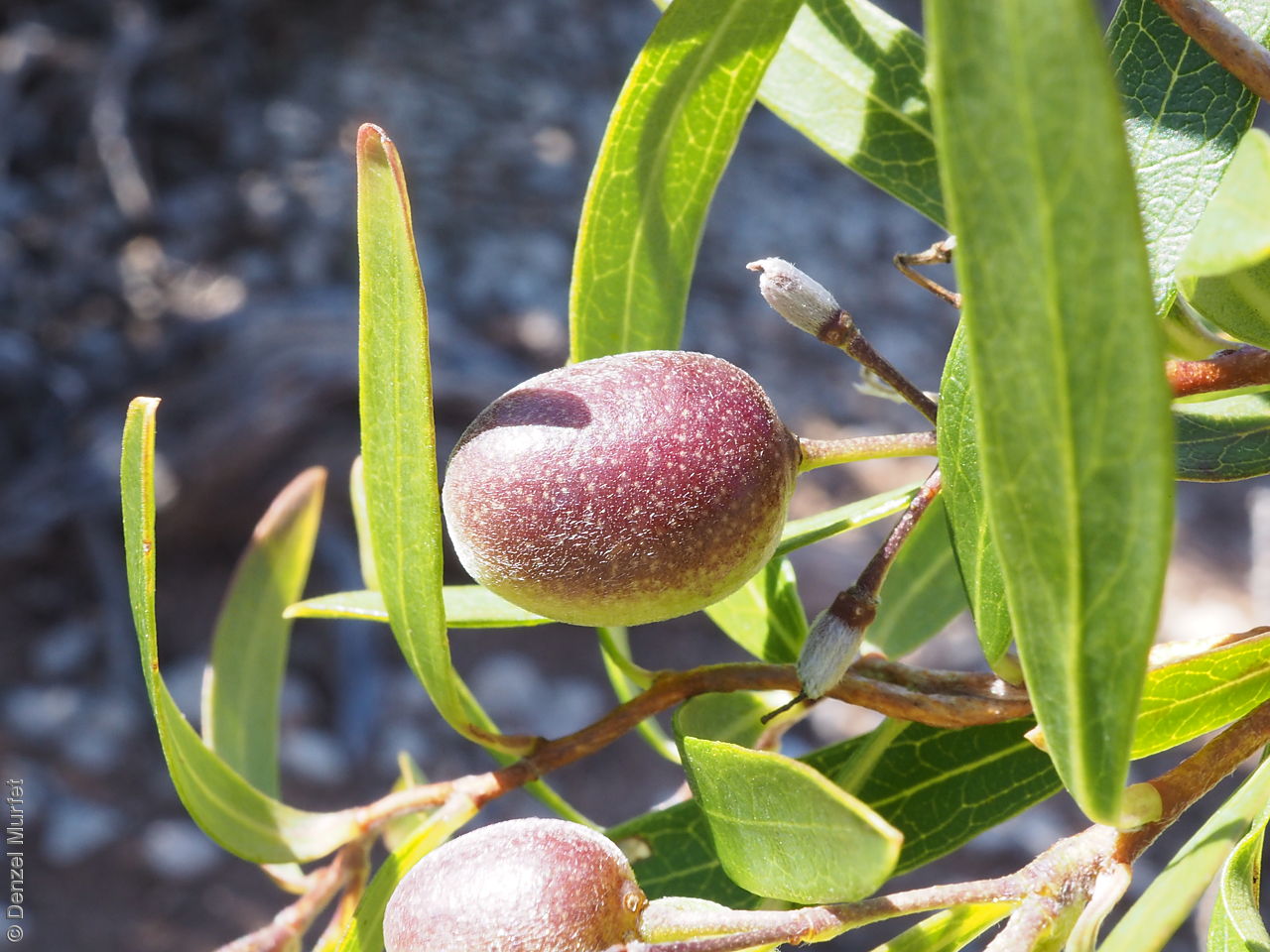
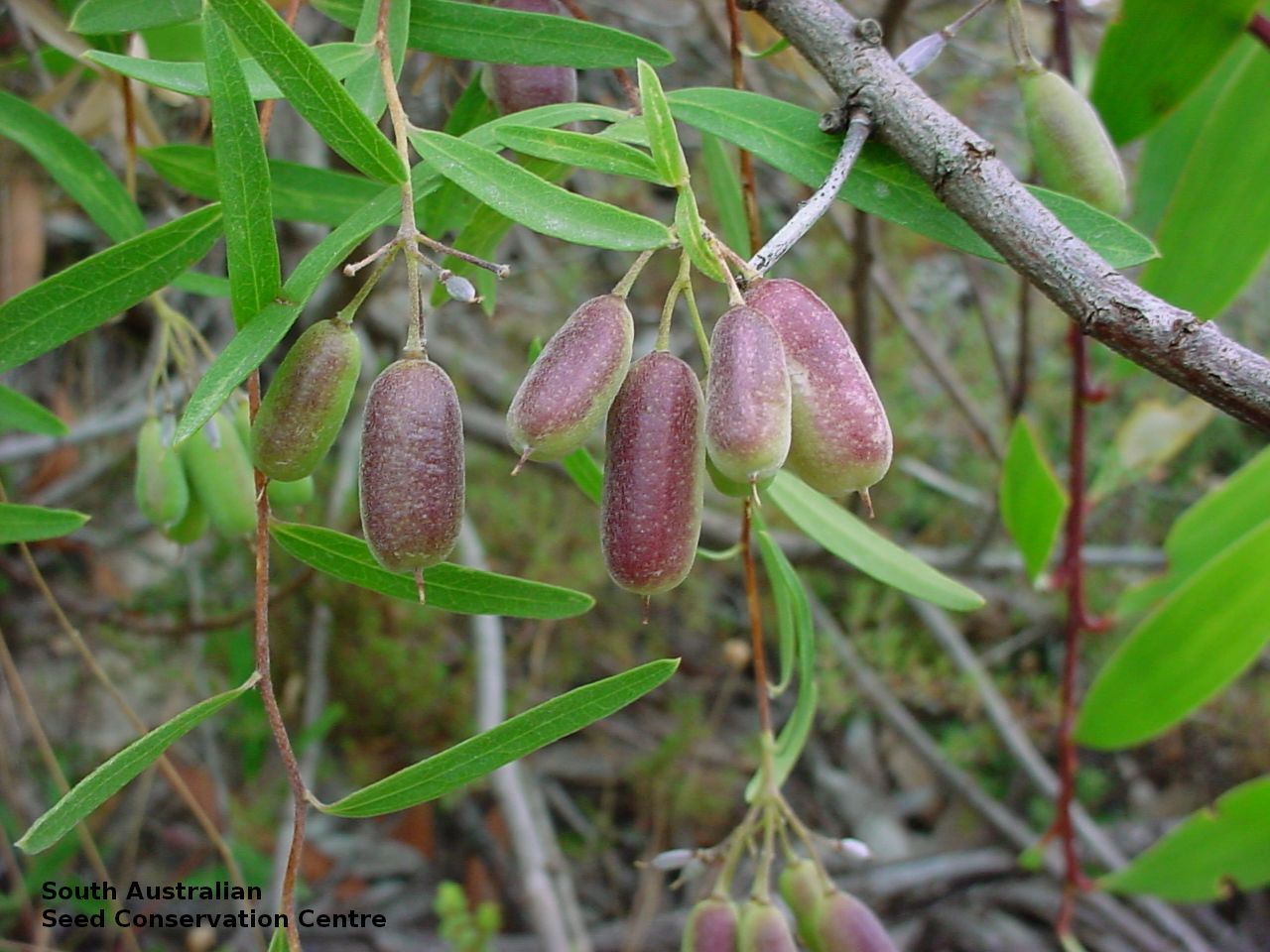
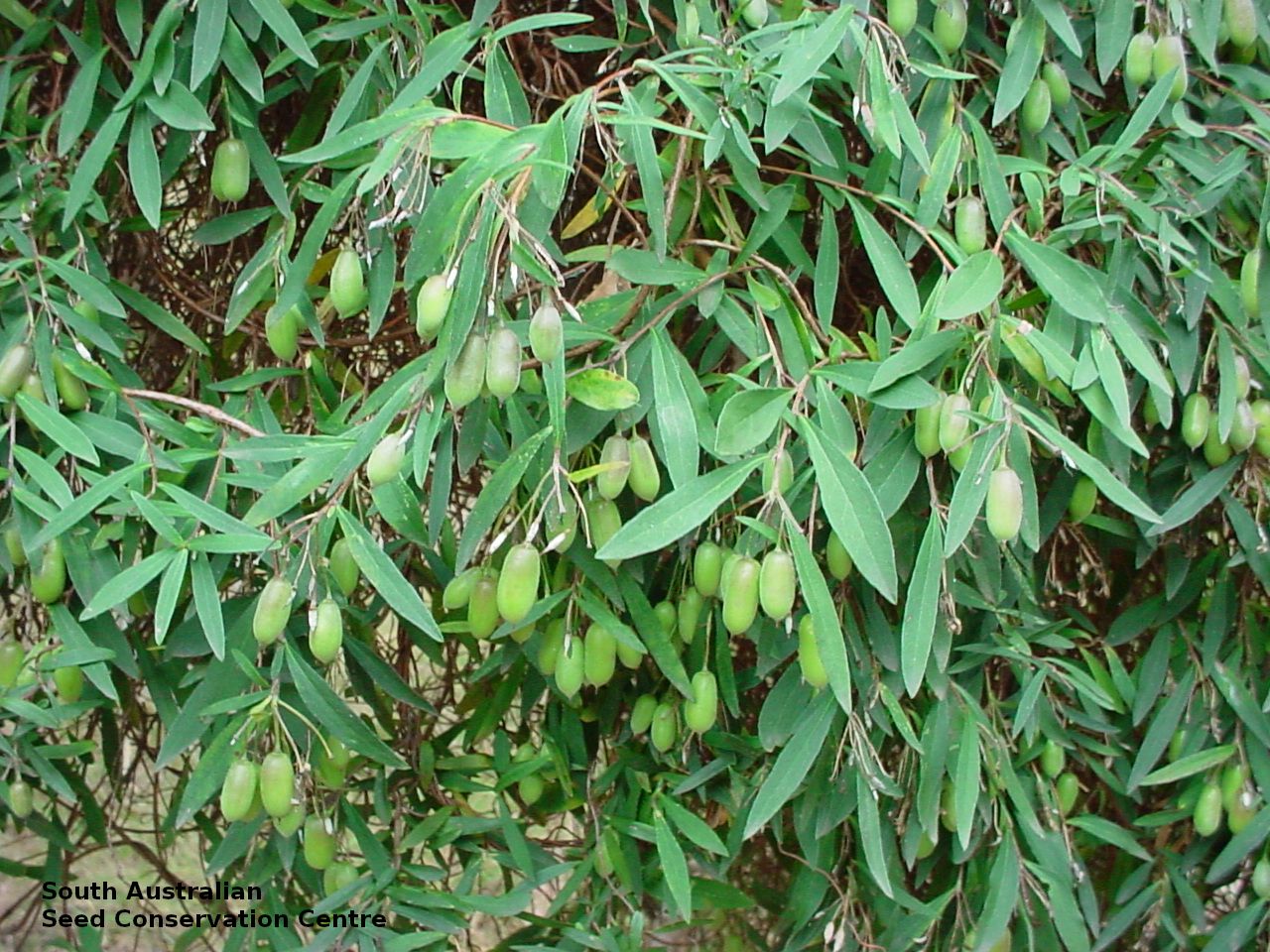
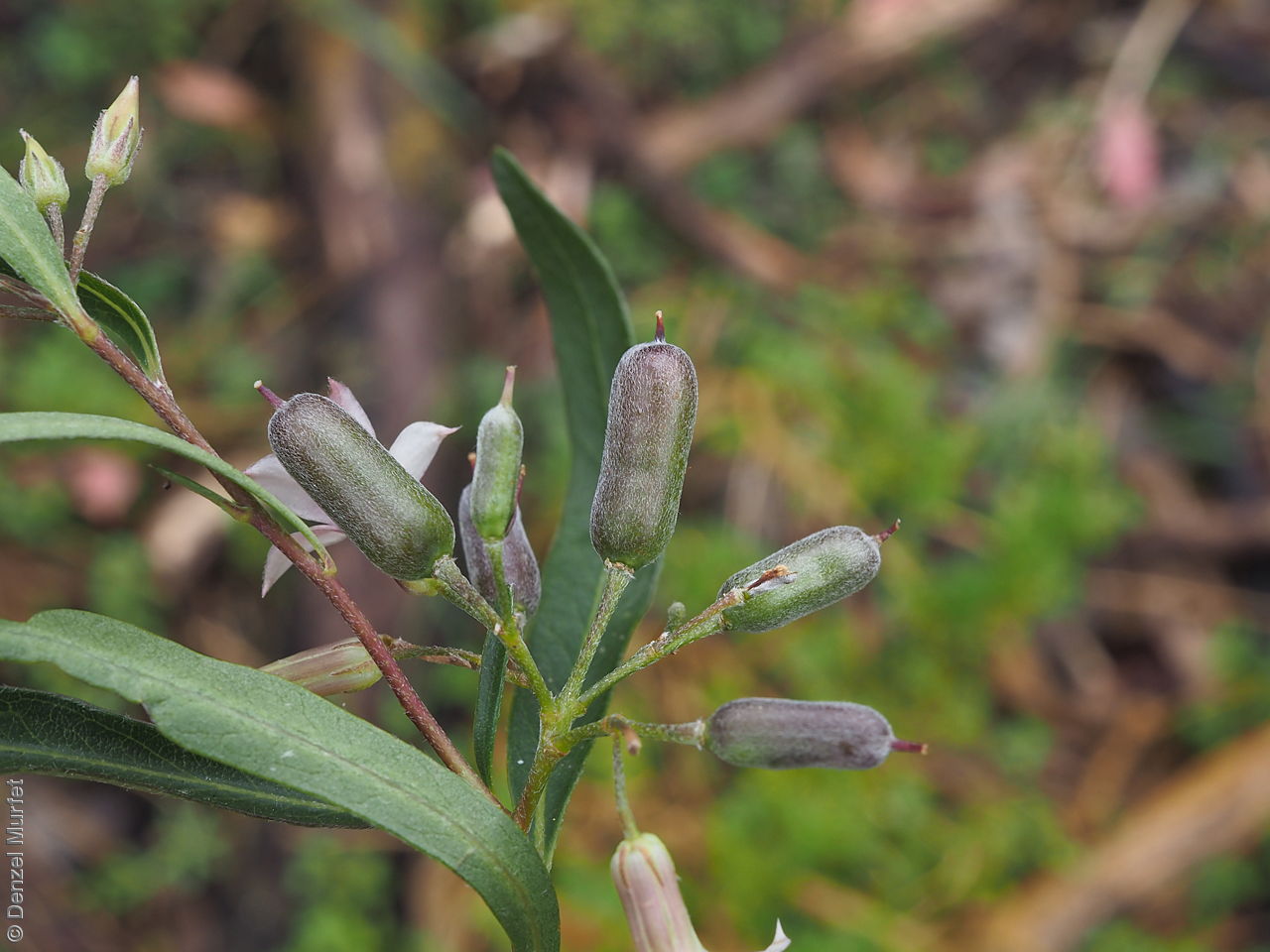

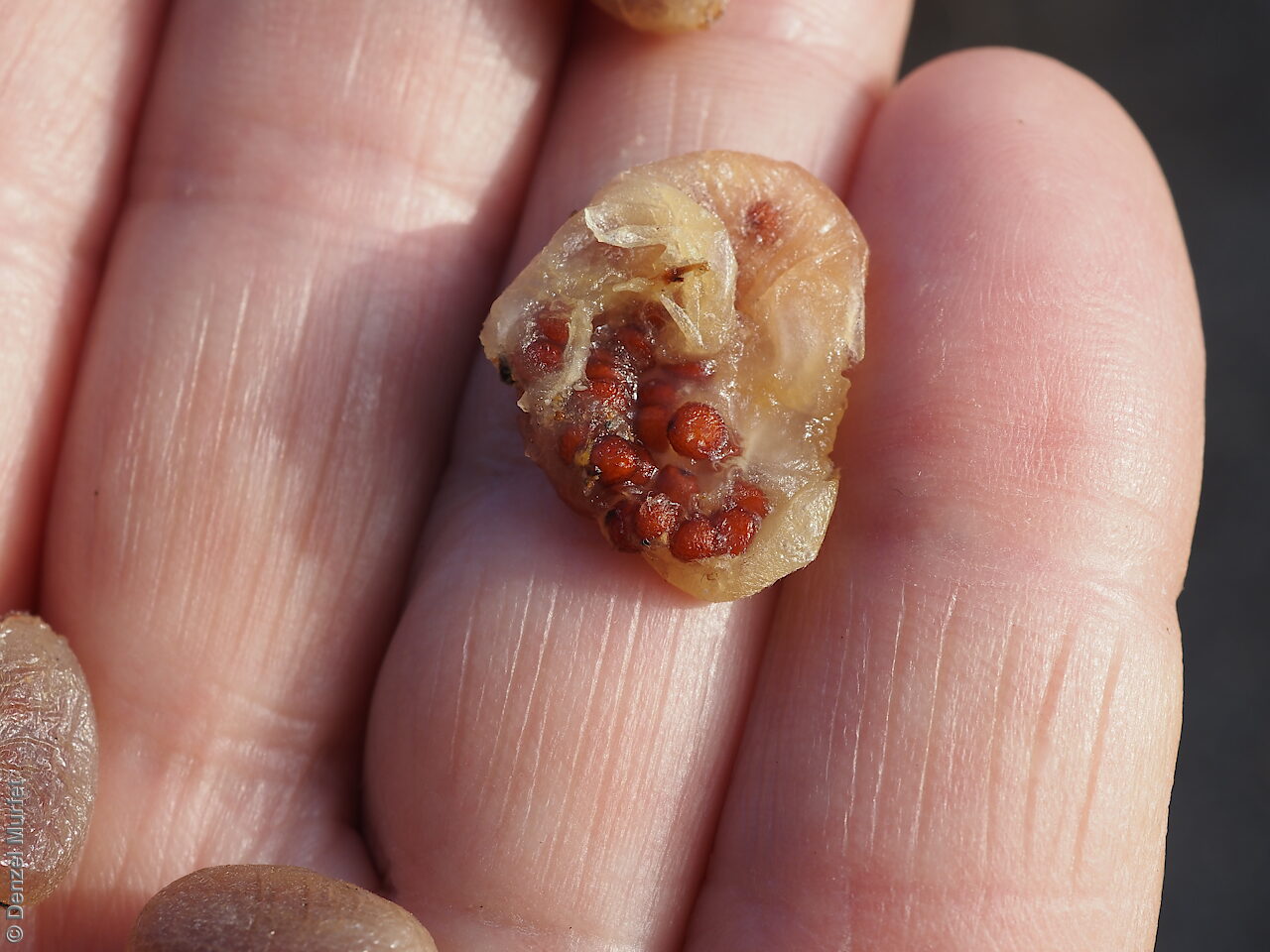
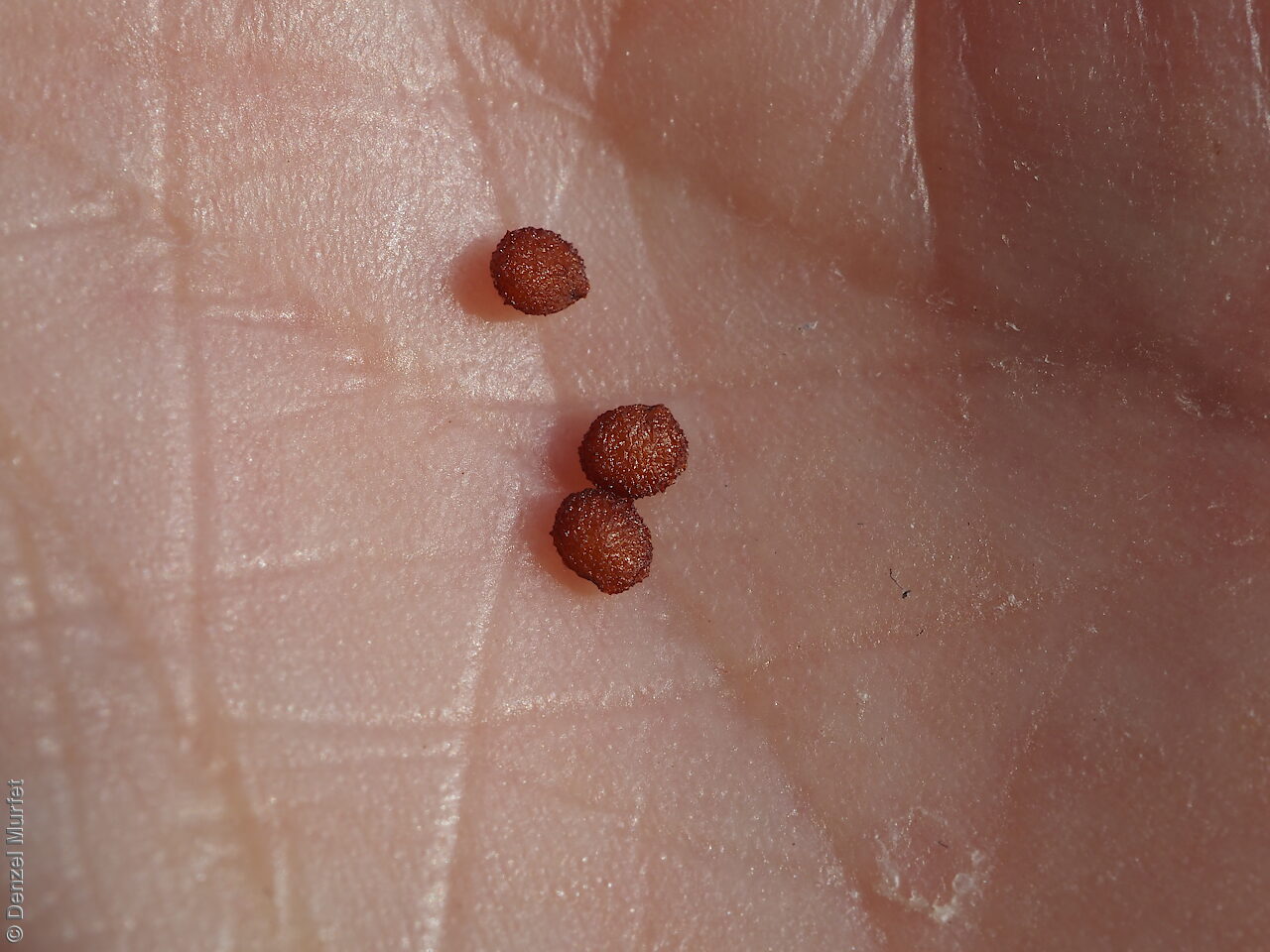

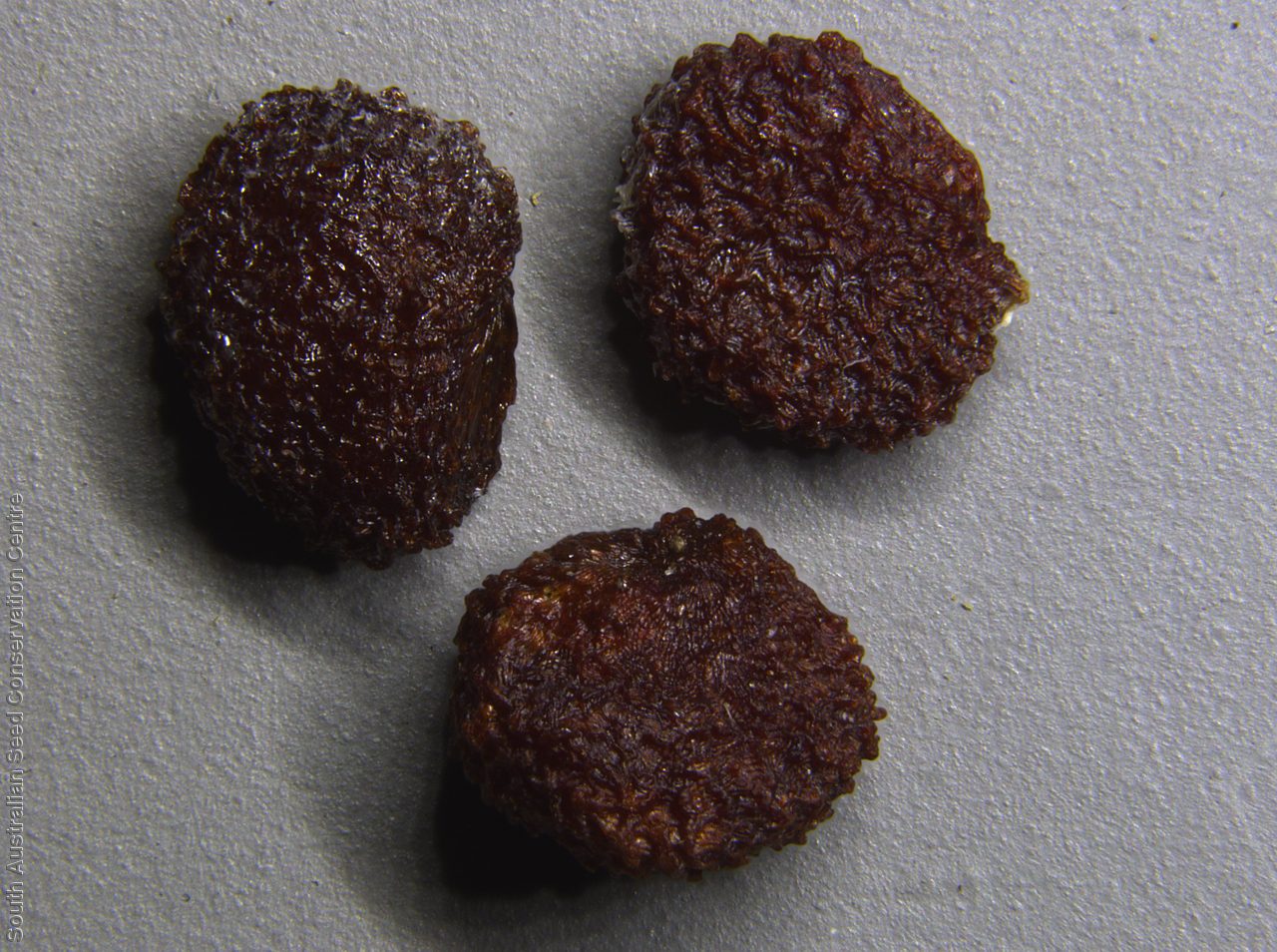


Prior names
Billardiera cymosa, partly
Etymology
Billardiera named after Jacques-Julien de Labillardiere (1755-1834), a 19th century French botanist who visited Western Australia and Tasmania with the D'Entrecasteaux expedition and named many new plant species. Cymosa means bearing cymes (an inflorescence in which the first flower is the terminal bud of the main stem and subsequent flowers develop as terminal buds of lateral stems).
Distribution and status
Found in the southern part of South Australia, from Eyre Peninsula to the South-east, growing in n mallee, heath and open woodland. Also found in Victoria. Native. Common in South Australia. Common in Victoria.
Herbarium regions: Eyre Peninsula, Murray, Yorke Peninsula, Southern Lofty, Kangaroo Island, South Eastern, Green Adelaide
NRM regions: Eyre Peninsula, Kangaroo Island, Northern and Yorke, South Australian Murray-Darling Basin, South East
AVH map: SA distribution map (external link)
Plant description
Twiner or spreading shrub with sessile, linear-lanceolate leaves to 65 mm long and 10 mm wide, both surfaces of mature leaves glabrous or with scattered hairs. Inflorescence terminal cymes with bell-shaped purple flowers. This subspecies differs from the other subspecies found in South Australia by having an ovary that is densely villous, sometimes showing only at the apex whereas Billardiera cymosa ssp. pseudocymosa has an ovary that is glabrous, rarely with a few scattered hairs. Flowering between November and January. Fruits are a cylindrical drupe, green and hard when immature and soft and dark purple when ripe. Seeds are dark brown, flat, reniform to 3 mm long and 2 mm wide covered in rounded projections (papillose). Seed embryo type is linear, underdeveloped.
Seed collection and propagation
Collect seeds between December and March. Pick mature fruits that are soft or have hard brown seeds inside. Clean ripe fruit as soon as possible as it will go hard if left to dry too long. Rub the fruits in water with your hands to dislodge the seeds from the fruit. Pour the mixture into a sieve to separate the seeds from the flesh. Place the wet seeds in a tray lined with paper and leave to dry for 1 to 2 days. Store the seeds with a desiccant such as dried silica beads or dry rice, in an air tight container in a cool and dry place. Seed viability is usually high. This species has physiological dormancy that need to be overcome for the seed to germinate.
| Location | No. of seeds (weight grams) | Number of plants | Date collected | Collection number Collection location | Date stored | % Viability | Storage temperature |
|---|---|---|---|---|---|---|---|
| BGA MSB | 1,600 (1.6 g) 1,600 (1.6 g) | 50 | 21-Dec-2004 | MKJ56 Southern Lofty | 28-Mar-2006 | 5% | -18°C |
| BGA MSB | 7,500 (15.8 g) 7,500 (15.8 g) | 50+ | 21-Dec-2004 | MKJ74 South Eastern | 28-Mar-2006 | 85% | -18°C |
| BGA | 230 (0.69 g) | 1 | 14-Feb-2006 | DJD386 South Eastern | 9-Aug-2006 | N/C | -18°C |
| BGA | 600 (1.27 g) | 1 | 2-Feb-2006 | HPV3014 South Eastern | 9-Aug-2006 | N/C | -18°C |
| BGA | 10,000 (30.27 g) | 70+ | 1-Mar-2006 | DJD413 Southern Lofty | 10-Aug-2006 | 95% | -18°C |
| BGA | 5,300 (15.9 g) | 18 | 1-Mar-2006 | DJD418 Southern Lofty | 10-Aug-2006 | 90% | -18°C |
Number of plants: This is the number of plants from which the seeds were collected.
Collection location: The Herbarium of South Australia's region name.
% Viability: Percentage of filled healthy seeds determined by a cut test or x-ray.